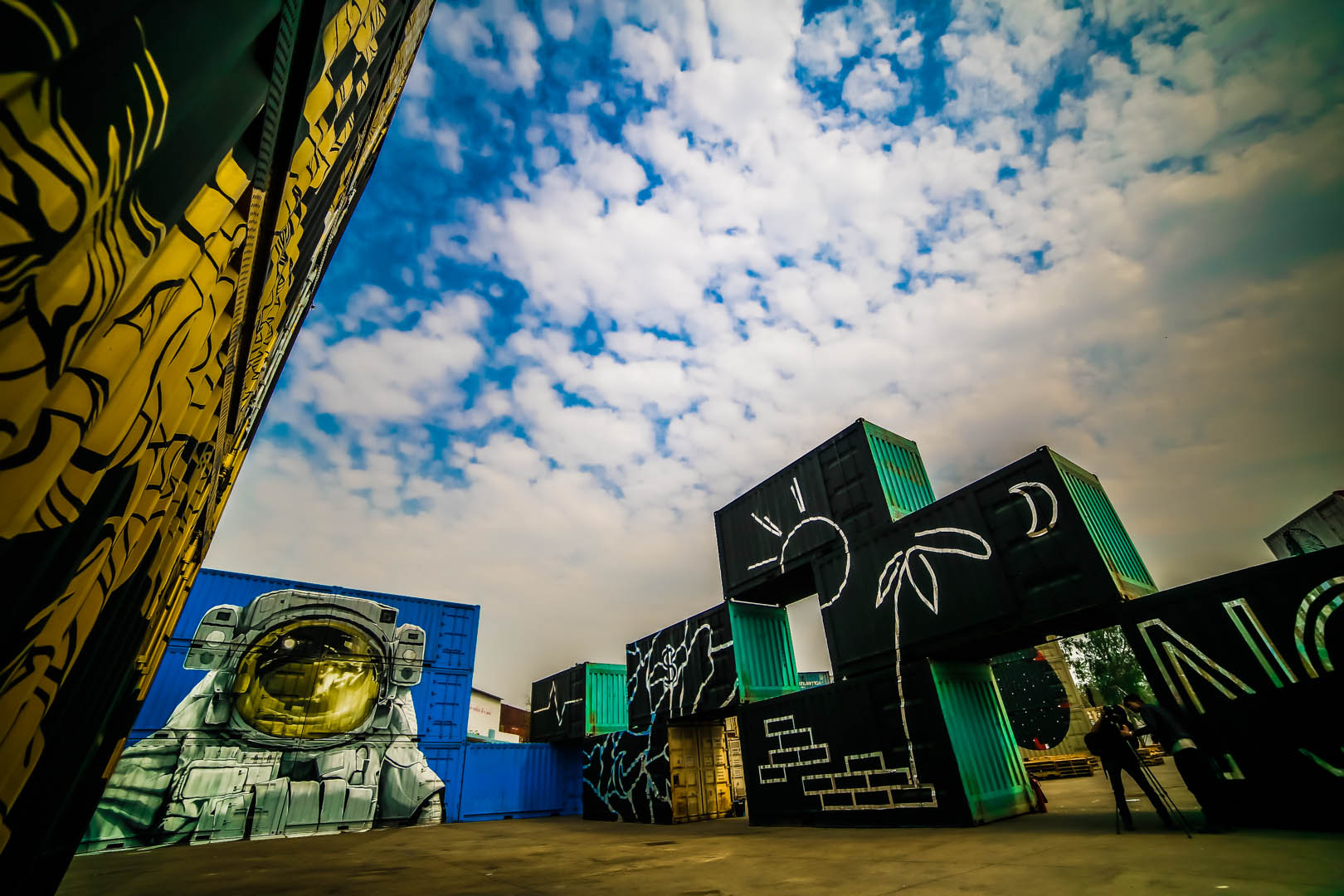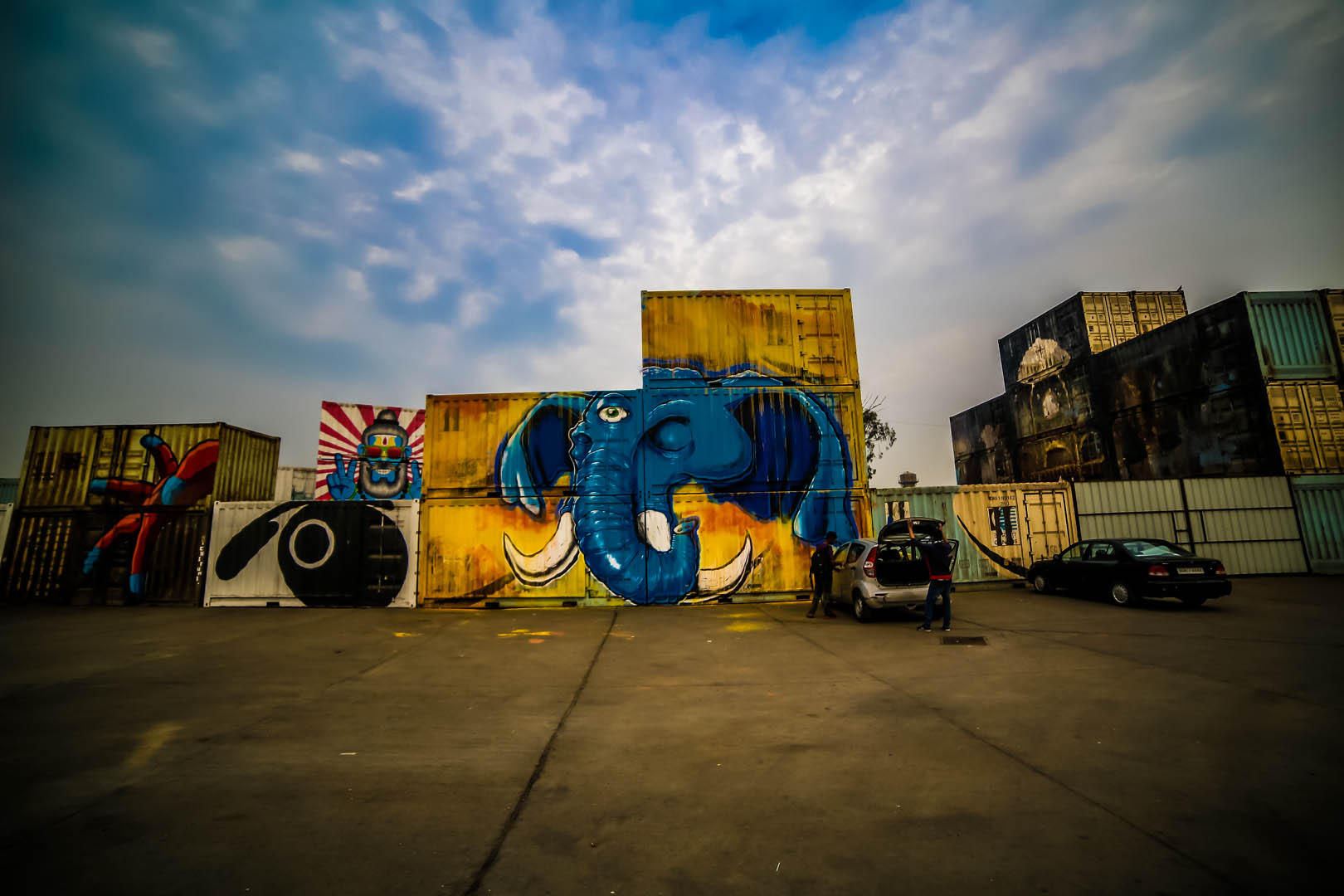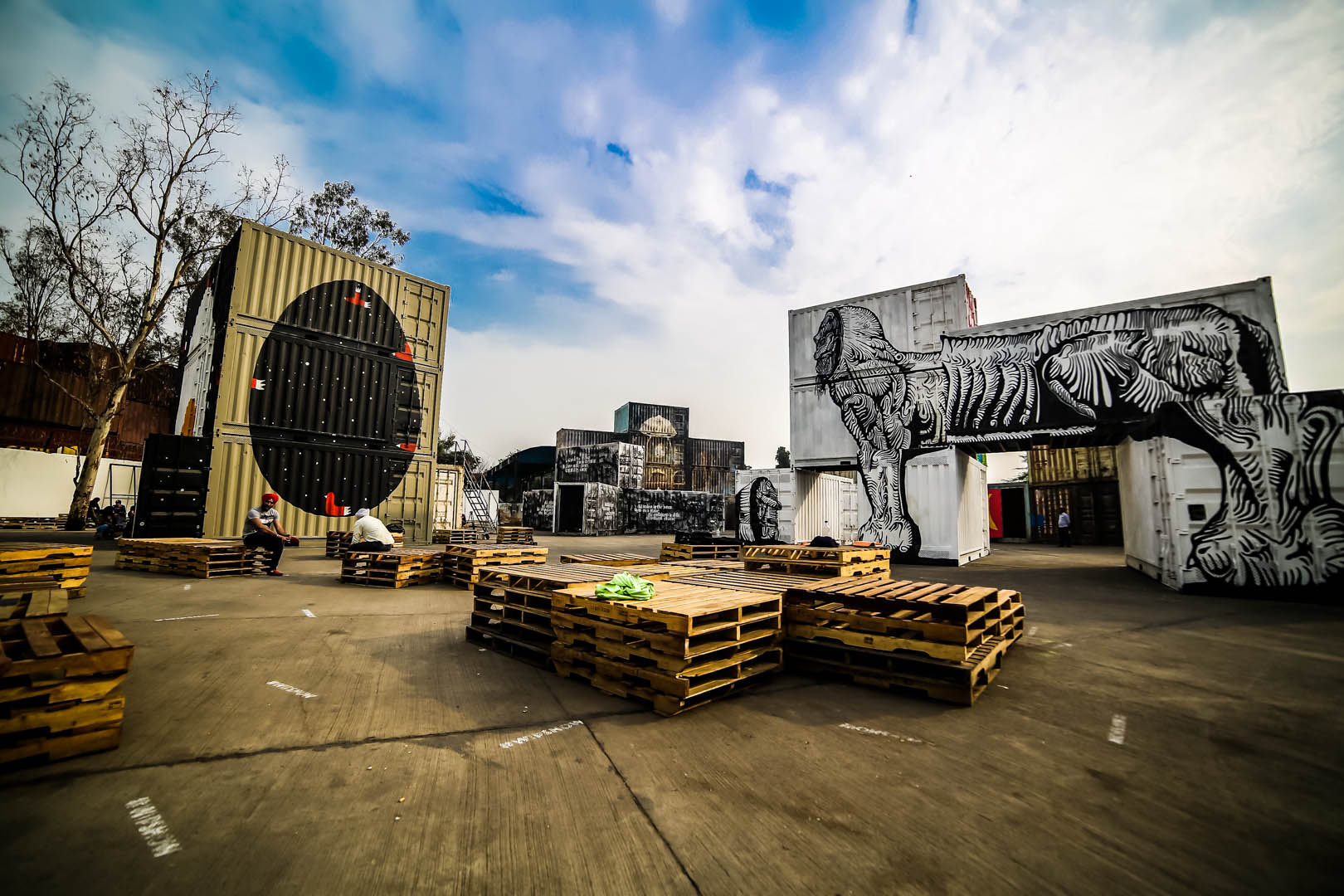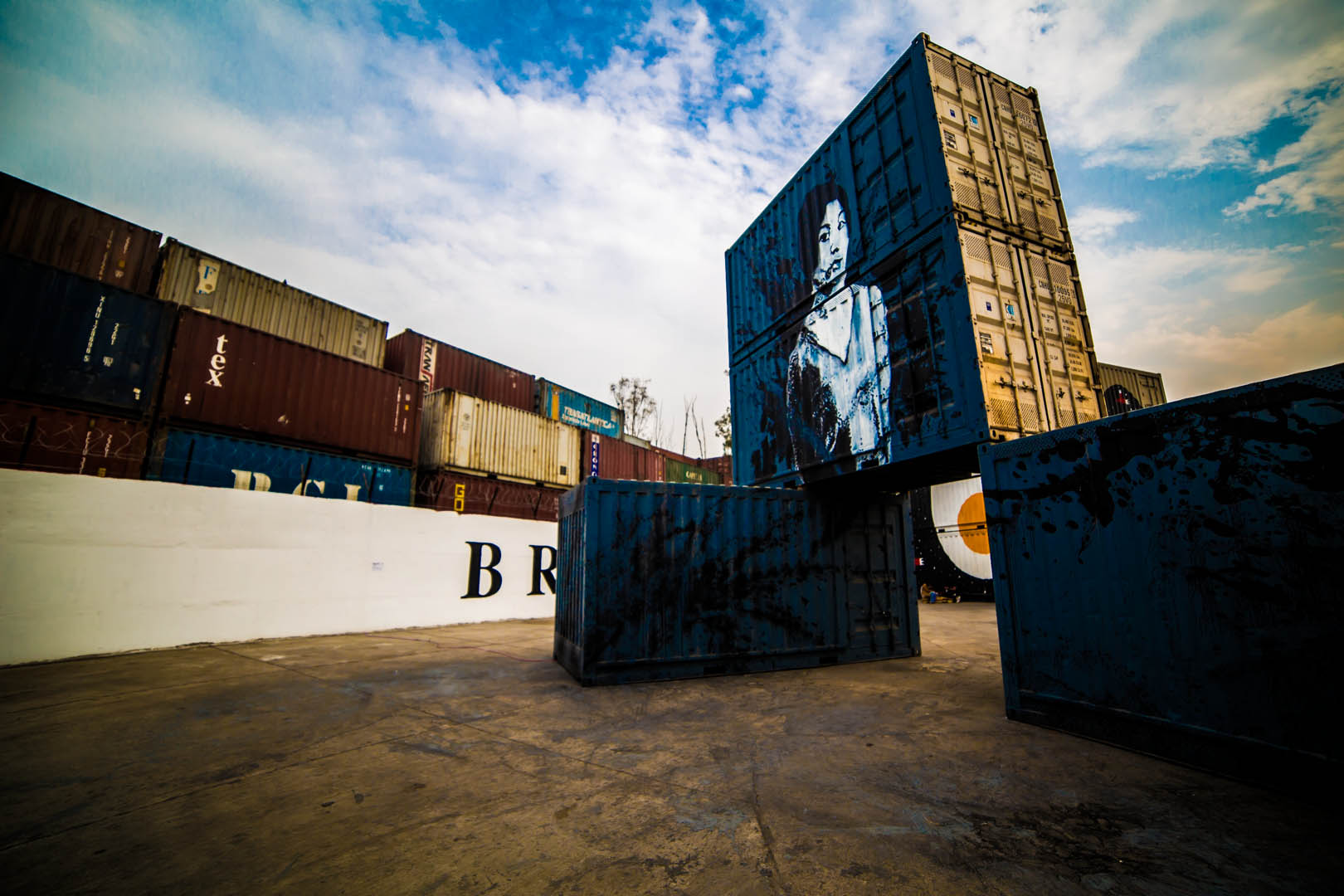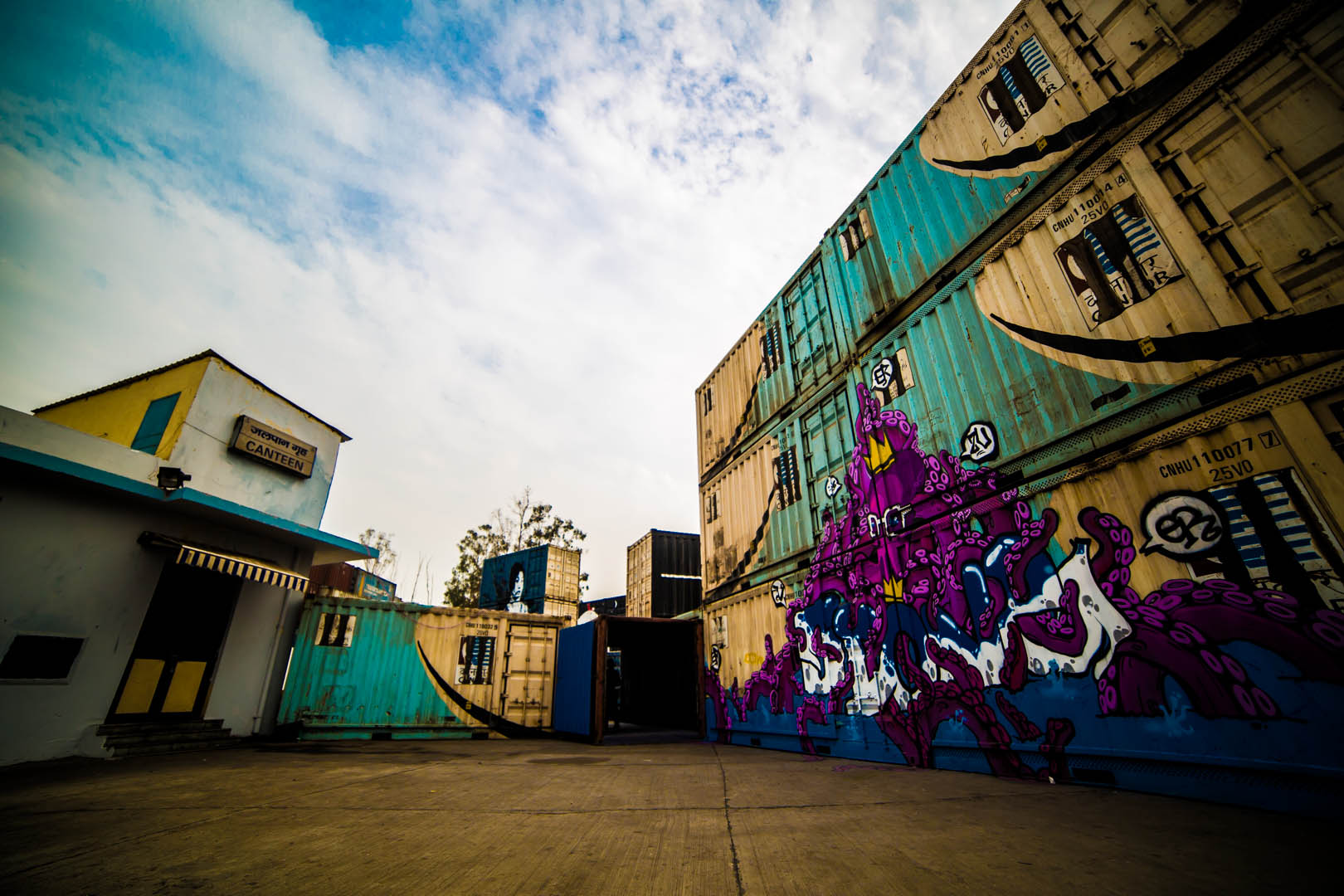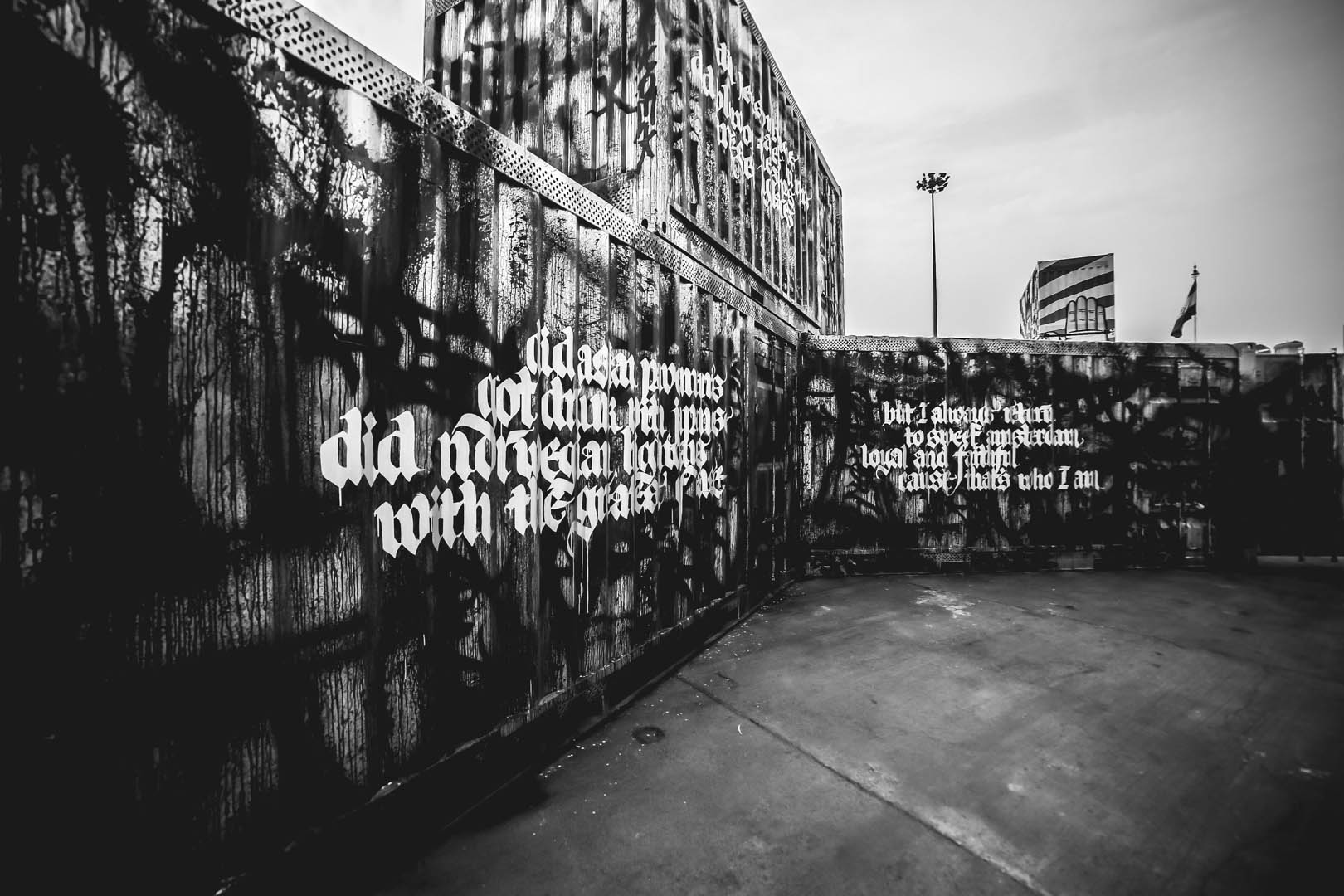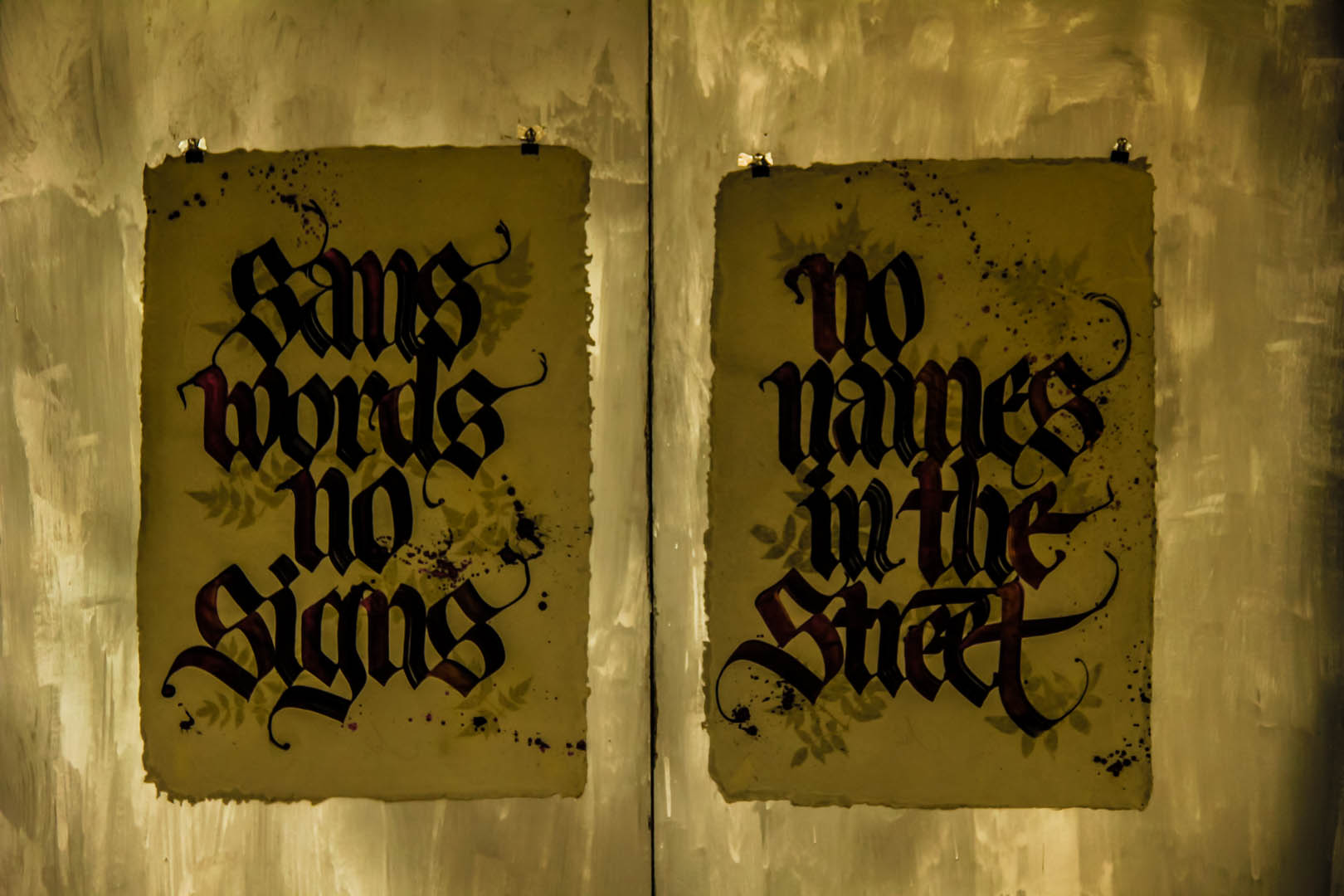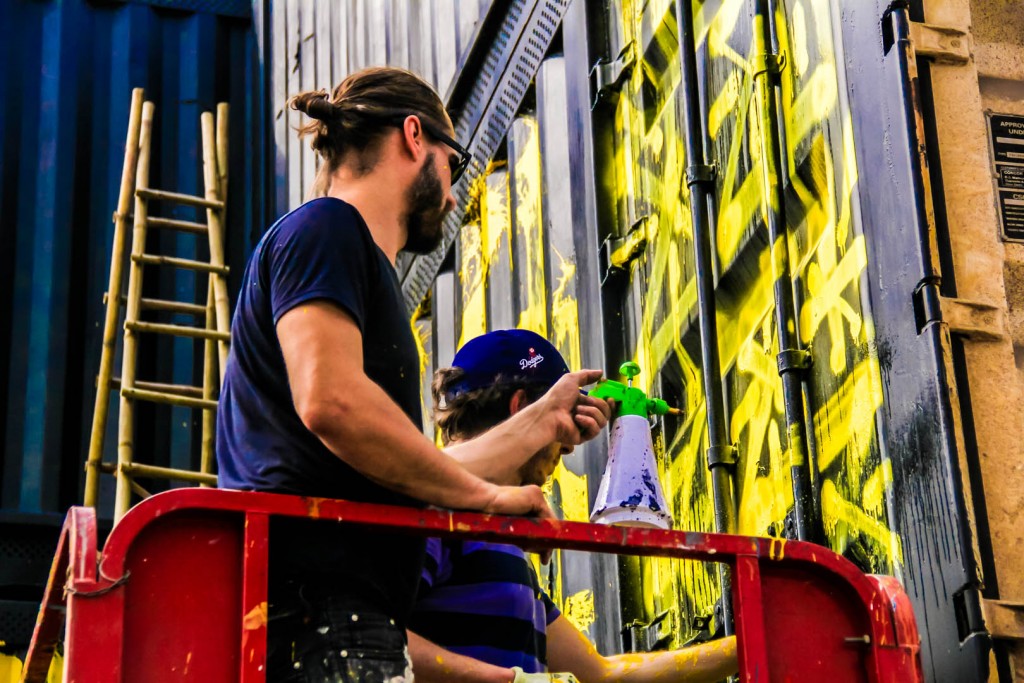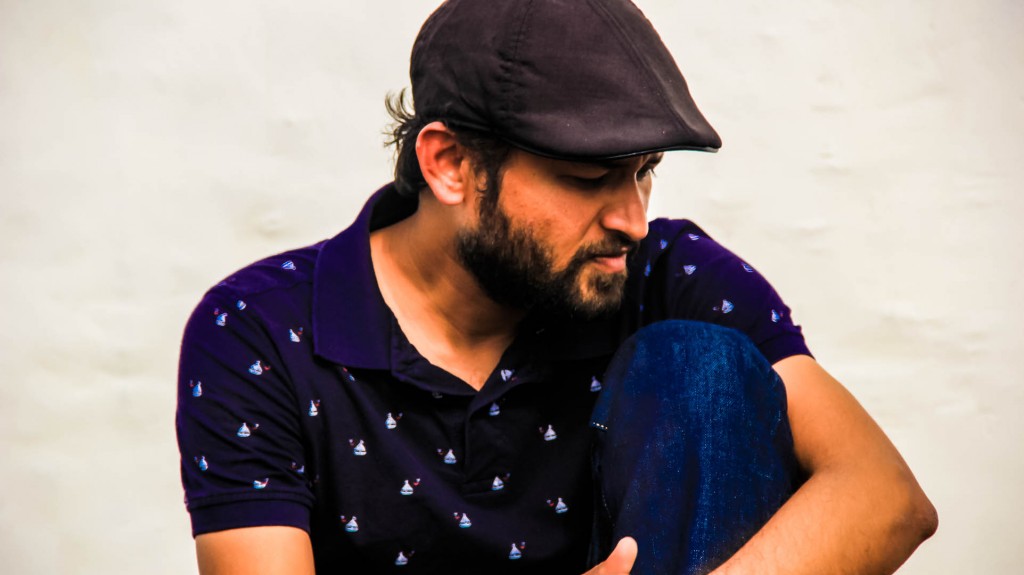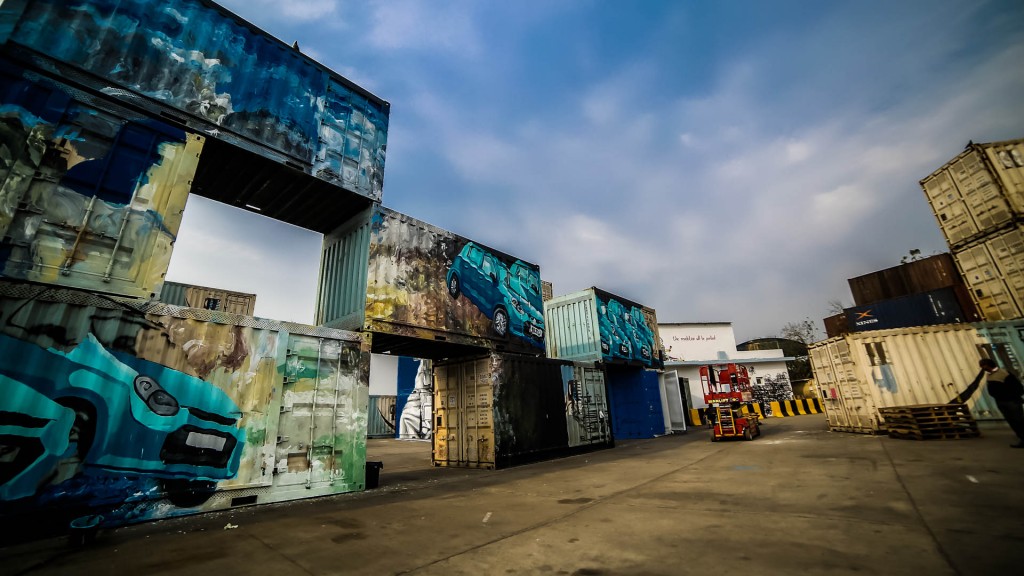Waging a solitary battle against the traffic and a seemingly never-ending crowd is an ordinary day in the life of a Delhi-ite. But on a surprisingly warm Saturday in February (the 20th to be exact), that’s where the ordinary ended. Expecting to mingle with the team behind the ‘St+art India Foundation’ and the artists involved in ‘St+art Delhi 2016’, Team TYS reached the premises of the ‘WIP Show’ at the Inland Container Depot, Tughlakabad, excited and slightly breathless, with a multitude of questions in tow.
It is not an exaggeration when we say that we were blown away by the tremendous art on display and delighted to catch international artists like Lek & Sowat and Gaia mid-stroke (literally!).
Taking time out of their busy schedule, Giulia Ambrogi and Hanif Kureshi – two of the founders of ‘St+art Foundation’ – sat down with us to chat. Here are the excerpts from the conversation;
What was the goal with which the St+art Foundation was started?
H – The goal of the foundation is to make art more accessible to people. Because these days art has become like a market. There’s an art market where there are buyers, sellers, collectors, artists, top selling artists and combining all of these together, it’s not even 1% of the total art population. It’s not used for any kind of expression, instead it’s all locked up in galleries. We just want to stretch the boundaries to which art has been confined to in India.
This is your 4th edition of St+art Festival, so are there any particular lessons you’ve learnt along the way?
H – Every festival comes with its own challenges. Every year we’ve only gotten bigger, so coordinating everything is definitely something that we had a problem with at the start. Especially the last Delhi festival (St+art Delhi 2015) was very challenging because we were scattered all over the city so it proved to be a bit difficult to coordinate.
Is it one of the goals of the St+art foundation to make an artist’s career more sustainable?
G – Definitely. But it’s something that takes a long time. Our work is also towards opening up new platforms and also opening up other eyes like the museums which are not really present in the fabric of the city. Like in Italy, museums are a hub for people from different backgrounds and different ages. You go and spend a whole day there because there a lot of activities happening there at all times. So that’s what we’re trying to do by stimulating this kind of dynamics. Hopefully others will also take a lead on this and see that this can happen in India too.
How would you say the response has grown over the years? Not just among the public but also in the government’s response to your endeavours.
G – I think a lot. I mean, sometimes we sit together and we’re like, “Damn, just two years!” For two years, it’s a lot but there’s still so much more potential. From the government’s side, we arrived to do a project at Lodhi Colony and that’s a huge project, also because it’s right in the centre of Delhi and it’s like government property. And even ICD here is government property. So I guess with the government every time we got kind of lucky to have interacted with the right people. But also because I think we can communicate a sort of enthusiasm and the purity of it. Because we don’t come with sponsors in our backpacks! Also, the streets are open so you can’t really calculate the visitors but over the years the interest has definitely grown.
You’re doing it on such a big scale this time around. How do you fund this? Is it self-funded or do you get donations?
G – So all the international artists are here because of their related embassies so some of them get fees from the embassies and some provide facilities like airfare, accommodation, materials, etc. So international artists are covered in this way. And then there’s Asian Paints. This time Asian Paints is our main supporter. So besides providing us paints, they’re supporting us in a much bigger way. Which is very important because as of now we’ve used 1700 litres of paint between here and Lodhi Colony.
Giulia, as somebody who’s not an Indian, what would be your take on the Indian graffiti scene? Were you aware of it before St+art?
G – No, not really. When I was in Italy, I didn’t know anything about Indian street art. When I came here the first time, I met Hanif. I’ve worked in this field since 2006 so it’s something that wherever I go, wherever I travel, I sort of always look for it. So I was looking around and saw just a few tags here and there like PCO, Yantr, Daku and just a few more. I mean in such a big city, there were very few pieces of street art.
So you were a bit taken aback by the lack of it?
G – Well, yeah. I mean everything with St+art began exactly by reading about the lack of it and by understanding that there was a sort of need to do something in this sense because compared to many other places like South America where cities are full of graffiti and street art, Delhi is quite bare. So, yeah I was pretty surprised by the lack of it all.
What part of St+art India do you manage? How do you divide roles?
G – I am the festival curator, Hanif is the artistic director, Arjun Bahl is the festival director, Akshat Nauriyal is the content director, Thanish Thomas is the project director and all other responsibilities are divided among the rest of the team members.
As a festival curator, what would you define your job to be about? As in, exactly what kind of work falls under your jurisdiction?
G – Well, basically I choose the artists. So everything you see here is what I curate. I deal mostly with the art side. Selecting the artists, selecting the pieces, starting the conversation months before. We start the conversation like 6 months in advance so there’s a lot of back and forth of ideas and the piece really grow together. It’s a long process.
For instance on the walls, selection starts by understanding the portfolio of the artist and I’ve worked with a lot of them in the past also, so some of them especially in this edition, I knew a lot of artists that we invited. So I know that range in which they work and the way in which they process information, the way in which they got inspired by the streets but mainly the selection starts like really by artists that in my opinion are extremely sensitive about the environment, about the context and they can react in a really site-specific way.
When I say site-specific I mean something which is like a current topic which is really relevant and I mean street art has the power to actually be reachable to a wider audience and has the power of creating awareness and starting conversations. Sometimes there are artists whose pieces are extremely beautiful but they don’t trigger any kind of dialogue.
Secondly since we’re not such a big team, I also deal with the embassies. All the international artists are supported by their embassies or institute of cultures. It’s a sort of triangle. I represent the artists, so I’m also the link between the artists and the embassies.
In India, art is still an unconventional choice of career. Is it the same in Europe?
G – I think it’s everywhere. In Europe or in US, you’ve a sort of different ground which is definitely more set. The difference is that for lots of artists who’re not so well know but who’re doing okay, in US or Europe, you’ve lots of side jobs. For us doing waitressing in a restaurant is normal. You do it for 5-6 hours, it’s just something to sustain yourself. And then you can dedicate everything else to your art. Here, there isn’t a system. In Europe and US, there’s already a platform which is structured. On the one hand, you’ve a lot of grants, from the governments and from foundations that you can apply for. So there are quite a few ways in which you can make it possible with the right exposure.
So do you have any favourite pieces in this edition or the previous editions?
G – In this edition perhaps my favourite piece is by Borondo. I was really surprised by INKBRUSHNME’s work. I mean it’s beautiful. They really surprised me!
After conversing with Giulia and Hanif for over an hour, and being in the presence of such great artwork, we were feeling quite inspired ourselves. Not to go out and paint (we aren’t very good at that unfortunately!), but to tell the story of everyone involved with the St+art Foundation. To tell the story of their tireless efforts, passion and creativity. We wish you all the best for the future and thank you for chirping with us!
PHOTOGRAPHS BY | ANIRBAN GOSWAMI, IPSIT RAJ AND VISMAY JAIN FOR THE YELLOW SPARROW
Unless stated otherwise, all content and photographs published within this website are copyright of The Yellow Sparrow. No part may be reproduced in whole or in part, without the specific permission.


